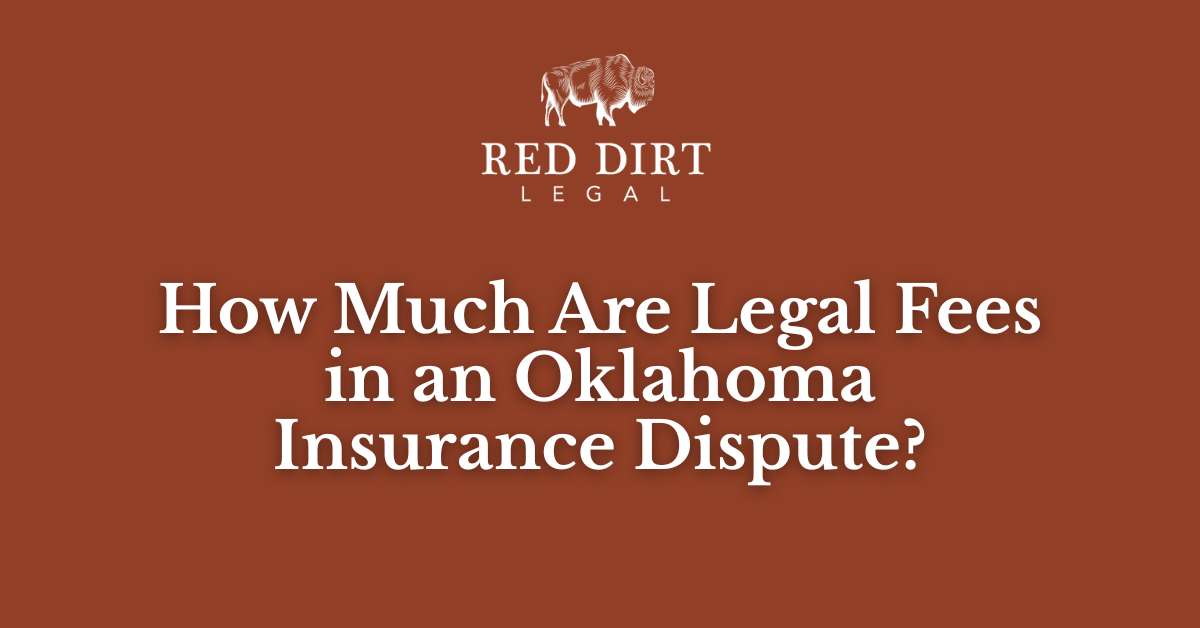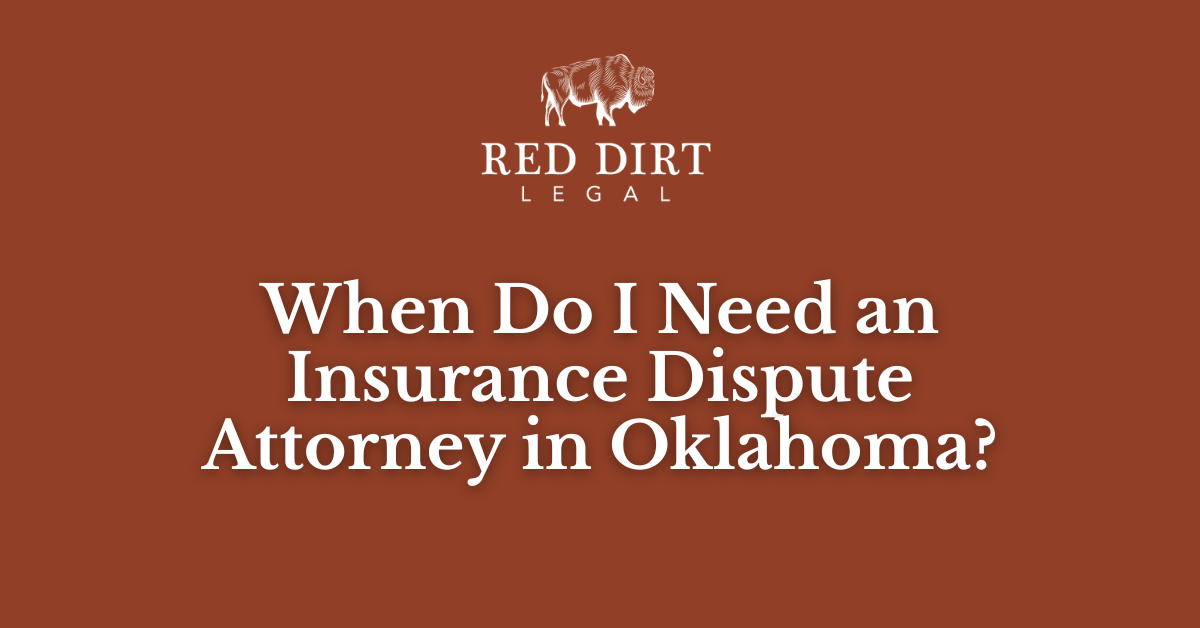When hail or wind damages a commercial property in Oklahoma, business owners often expect their insurance policies to respond quickly and fairly. Unfortunately, that’s not always the case. From delayed payments to lowball repair estimates, disputes between policyholders and insurers are all too common, especially after major storms that hit multiple properties at once.
At Red Dirt Legal, we’ve worked with Oklahoma businesses facing insurance battles after serious storm damage. Knowing how these disputes unfold can help you protect your property and your bottom line.
What Types of Storm Damage Are Covered?
Commercial property policies typically cover direct physical damage from hail, wind, or falling debris. This can include:
- Roof, siding, and window damage
- Water intrusion from storm-compromised structures
- Damage to HVAC systems or signage
- Business personal property losses (equipment, furniture, inventory)
But not all damage is automatically covered. Claims can be denied or underpaid if the insurer says the damage is cosmetic, caused by wear and tear, or unrelated to the storm.
Common Disputes After a Hail or Wind Claim
Storm-related claims can be complex, especially when adjusters and contractors disagree on the cause or extent of the damage. Here are some of the most common disputes:
- Low repair estimates that fail to reflect actual local costs
- Claims are delayed by repeated inspections or missing documentation
- Partial approvals for visible damage, but denials for structural issues
- Coverage disputes about what triggered the damage (storm vs. age)
- Business interruption disagreements if your policy doesn’t clearly define downtime
If you’re not sure whether the insurer’s decision is fair, comparing it against a contractor’s assessment is a good first step. In many cases, having a lawyer familiar with commercial policies can help interpret unclear or one-sided policy terms.
How to Strengthen Your Claim Early On
The way a claim is handled from the beginning can affect the outcome, especially if a dispute arises later. Property owners can protect their position by:
- Taking detailed photos and videos of all damage
- Keeping receipts for temporary repairs and emergency services
- Saving all communication with the insurance company
- Getting an independent repair estimate
- Documenting business interruptions and expenses
Being proactive can also help push back on delayed claims that drag out for weeks or months after a storm.
Coverage Gaps and Policy Limitations
Some disputes stem from the language of the policy itself. For example:
- Cosmetic damage exclusions might apply to metal roofs or siding
- Some policies cap wind or hail coverage at lower limits than other hazards
- Business interruption coverage may only apply under specific conditions
- Repairs must sometimes meet insurer-preferred specifications, not necessarily what’s best for the building
If the terms feel confusing or incomplete, reviewing them early can help prevent surprise denials. These gaps are often only noticed during a close policy review with an experienced attorney.
What to Do If Your Claim Is Denied or Underpaid
If your insurer won’t pay what your claim is worth (or is only covering part of the damage), you’re not out of options. Start by organizing all documents: your policy, the damage report, correspondence, and any third-party estimates.
You don’t have to accept the first decision. Many commercial property owners have successfully pushed back against insurers using policy terms and clear evidence.
Don’t Let Storm Damage Disputes Stall Your Recovery
Storms can’t be prevented, but unfair claim outcomes and insurance disputes can be challenged. Knowing what to expect, documenting everything, and understanding your rights as a policyholder are key to protecting your business after hail or wind damage.
If you’re dealing with a commercial claim dispute in Oklahoma and need help moving forward, contact Red Dirt Legal to learn more about your options.
FAQ:
1. What types of commercial storm damage are covered by insurance in Oklahoma?
Most commercial property insurance policies in Oklahoma cover hail and wind damage to buildings, signage, equipment, and inventory. Coverage may vary depending on the policy terms and any exclusions, so it’s important to review your policy closely after a storm.
2. Why do insurance companies deny or underpay hail and wind damage claims?
Common reasons include disputes over the cause of damage, claims of pre-existing wear and tear, low repair estimates, or vague policy language. These issues can result in underpaid or denied claims for Oklahoma businesses.
3. What should I do if my commercial hail damage claim is delayed?
If your claim is stuck in limbo, document all communication with the insurer, gather your own estimates, and keep records of ongoing losses. Many delayed claims lead to further damage or business interruption that may not be covered without timely action.
4. Can I dispute the insurance company’s repair estimate for storm damage?
Yes. You can and should challenge any estimate that doesn’t reflect the true cost of repairs. Independent assessments from licensed Oklahoma contractors often help clarify the actual scope of damage and support your case during an insurance dispute.
5. Does business interruption coverage apply after hail or wind damage in Oklahoma?
It depends on your policy. Business interruption insurance may help cover lost income after storm-related damage, but only if the physical damage is acknowledged and meets your policy’s requirements. Gaps in coverage or policy disputes are common.
6. What are my rights if my Oklahoma commercial storm claim is denied or underpaid?
You have the right to a fair claims process, timely communication, and an explanation for any denial or reduction in coverage. If your insurance company isn’t meeting its obligations, you may be able to challenge the decision or pursue a bad faith claim.









